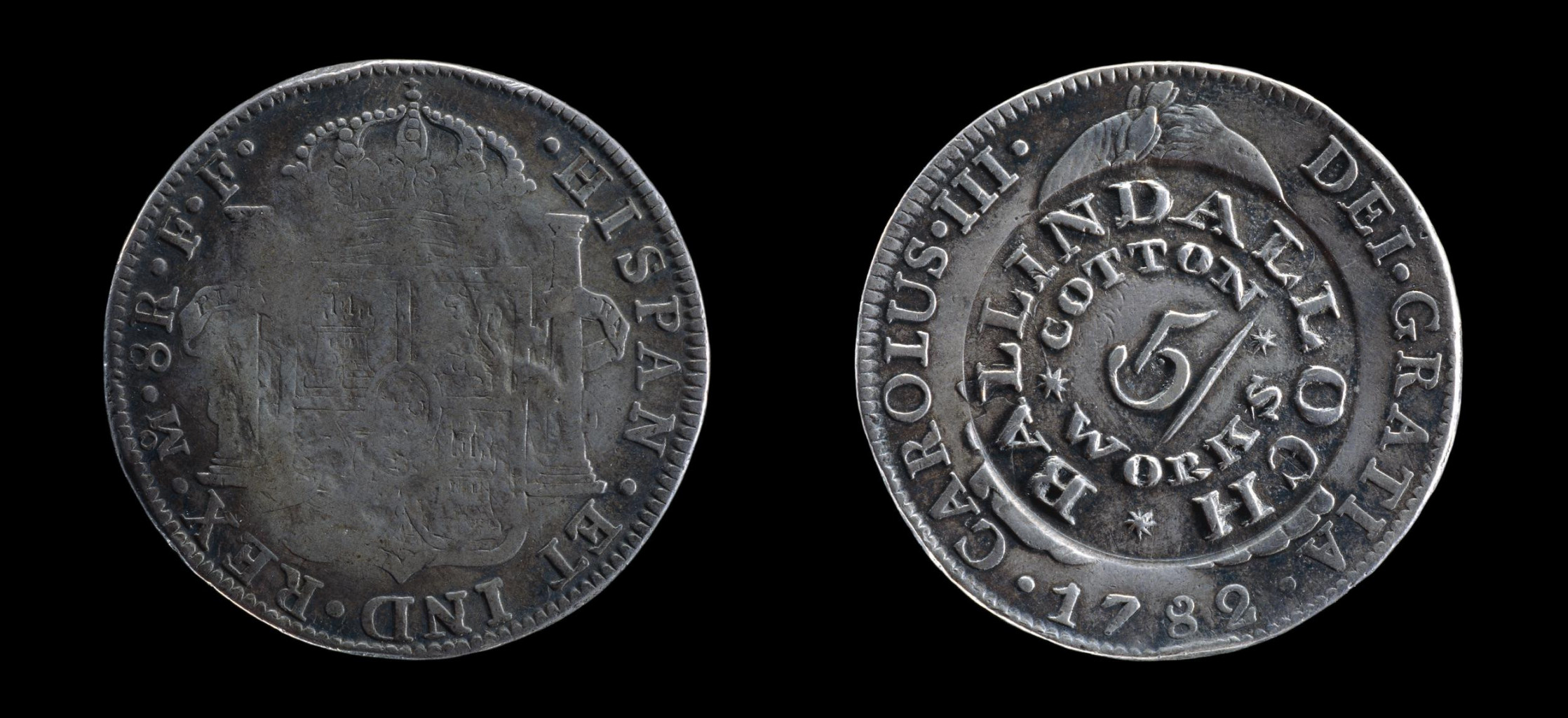Mill owners and manufacturers in British industrial centres imported Spanish American coins and marked them with their own stamps, altering the face value of the coin to a higher value than its intrinsic silver content as a way of ensuring the money was accepted and stayed in circulation. These altered Pieces of Eight were exchanged by British mill workers in the factory shops and local towns. The practice of countermarking Spanish American coins increased with prices and wages and is visible in the subsequent stamping of coins with values of five shillings. This practice provided a vital solution to a serious problem for the cotton mill industry. The countermarked coins are material evidence of a time of great change in the lives of British workers.
Piece of Eight with the stamp of Ballindalloch Cotton Works
Charles III Piece of Eight from 1782, minted in Mexico and countermarked with the stamp of Ballindalloch Cotton Works in Scotland (courtesy of the Trustees of the British Museum).
Alejandra Irigoin and Bridget Millmore
Further reading
- Flynn, D. (1996) World Silver and Monetary History in the 16th and 17th Centuries (Aldershot: Variorum).
- Irigoin, A. (2018) ‘The rise and demise of the global silver standard’, Handbook of the History of Money and Currency (Singapore: Springer).
- Lin, M.H. (2006) China Upside Down: Currency, Society, and Ideologies, 1808–1856 (Cambridge, MA: Harvard University Asia Center).
- TePaske, J., and K. Brown (2010) A New World of Gold and Silver (Leiden: Brill).
- Von Glahn, R. (1996) Fountain of Fortune: Money and Monetary Policy in China, 1000–1700 (Berkeley, CA: University of California Press).





